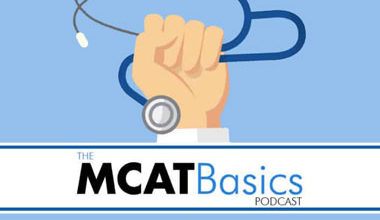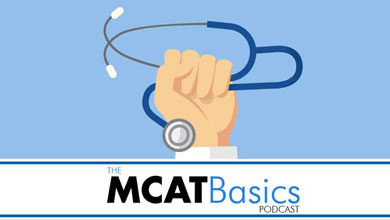Chase and Sam discuss various study tips, habits, and evidence-based methods to help students succeed on the MCAT and in medical school.
- [01:03] How To Memorize A Million Things
- [02:26] The Spacing Effect and Rehearsal Effect
- [06:02] Overcoming the “Forgetting Curve”
- [08:03] Elaborative Interrogation
- [10:06] Anki: Using Pre-Existing Study Materials verses Creating Your Own
- [13:08] Memory Palace and Visual Mnemonics
- [18:29] Memorizing Mistakes and Avoiding Passive Memory Techniques
- [20:30] The effects of sleep, exercise and diet on learning
- [23:35] Evidence Based Study Techniques in Education
Medical students are faced with a vast amount of information to retain. Studying for the MCAT or board exams can be intimidating, but with the employment of various studying techniques, one can ease their cognitive stress load. Evidence based study techniques have been around for a long time, so why aren’t they more predominant amongst medical students? In short, they are. Perhaps you are one of the many students that have been using these techniques without being aware of it. Moreover, you may not realize how to use these techniques to their full their potential.
Evidence-Based Study Techniques
Chase’s evidence-based study techniques revolve around two methods:
- The Spacing Effect
- The Retrieval Effect (or Rehearsing Effect.)
The Spacing Effect relies on spacing out the studying of the same material over time, allowing for a more durable and long-lasting storing of information. The Rehearsal Effect method of rehearsing and recalling material without any sort of primer, enables one to formulate a stronger connection to the material than simple recognition memory would allow. The combination of these two methods into a spaced repetition technique is a highly efficient evidence-based study technique for any kind of student.
Research indicates that if nothing is done to reinforce learning within 72 hours, it is likely to be forgotten. This heuristic is called the forgetting curve. In order to avoid the forgetting curve, Chase suggests applying the 1-1-3-1-1 method. The 1-1-3-1-1 method is a spacing technique wherein a student spaces out their studying by rehearsing information after learning it within 1 hour, then 1 day, then 3 days, then 1 week, and then within 1 month.
The visual mnemonic technique involves creating visual associations in your mind between imagined objects and retained information. Utilizing the brain’s strong visual spatial memory, you create a location-based memory by entering your “memory palace.” In this familiar location, you visualize the arrangement of the room by placing various objects that each have their own unique association to a piece of information that you need to recall. This method has proven to be both a fun and quickly effective creative memory technique.
Chase also discusses an evidence-based learning technique called elaborative interrogation. It involves an elaborative interrogation of your own understanding about a topic by asking yourself detailed questions about the material to explore the depth of your understanding of the information. Testing your own understanding of a certain topic in this way both solidifies knowledge you have already retained, as well as provides insight into particular areas that you are not as familiar with and might need to spend some more time learning through spacing and rehearsing.
A final technique Chase discusses is interleaving. Interleaving is when a learner switches up the material or topic they are studying within a study session. This can be effective in creating links between different study topics that will deepen your understanding of each subject. However, it can be very difficult to create the best formula of interleaving.
Chase, like many students, struggled in medical school to understand the best way to study. He now sees the need for better education about evidence-based studying techniques and the most efficient ways for students to utilize them. Do you see this need in your own educational experience? How can you maximize your studying potential with Chase’s techniques, or what studying habits do you need to shake? Be intentional about taking the time to understand the most effective ways to retain information so that you can be successful in medical school.
Sign up for a Free Coaching session with Chase DiMarco, sponsored by Prospective Doctor! You can also join the Med Mnemonist Mastermind FB Group today and learn more about study methods, memory techniques, and MORE! Also, do check out Read This Before Medical School.

